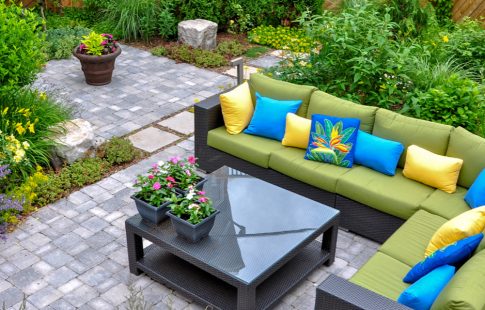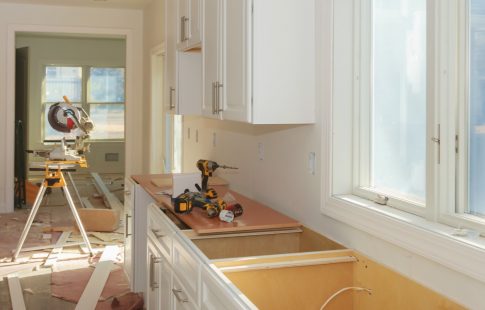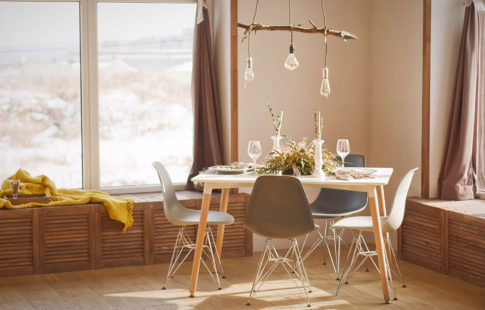Estimated reading time: 7 minutes
A kitchen remodel can be a big undertaking—and adhering to a timeline and a budget can make it even trickier. But with a little planning, you can set yourself up for a successful renovation that doesn’t take forever or break the bank. By taking 10 days to plan a remodel timeline in 10 distinctive phases, you can streamline your efforts and optimize your spending when it comes to both time and money. So if you’ve decided not to hire a contractor or your kitchen upgrades are minimal, read these tips for help planning a kitchen remodel.
Day One: Demolition & Clearing
The amount of demolition you’ll have to do depends on the goals of your kitchen remodel, but no matter the scale, you’ll want to start making room for the new by getting out with the old. Once your plan is in place and you’re ready to do the pre-work, here’s where to start:
- Cover things you aren’t removing or changing with taped-down plastic sheeting.
- Turn off the power and remove wired appliances and fixtures, then cover exposed wires with wire nuts.
- Remove cabinet doors.
- Remove doorway and window trim.
- Remove paneled walls, if necessary, using a crowbar or a sledgehammer (be sure not to smash the studs).
Day Two: Plumbing
There’s no better time to make updates to plumbing than when your walls are open. Consider whether you want to take on projects like replacing your shutoff valves, running a new gas line if you’re replacing an electric stove with a gas stove, or upgrading plumbing pieces that have galvanized. And if you encounter surprises or start feeling overwhelmed as you start planning, know that a great rule of thumb is to hire a professional plumber.
Day Three: Electrical
Speaking of hiring a professional… electric work is best done by a professional electrician who knows what they’re doing. For phase three of your kitchen remodel, work with a pro to tackle the stuff that powers your space.
- Consider upgrading your circuit breaker box.
- Replace wiring, especially if your existing wiring isn’t up to code.
- Make sure every appliance has a dedicated circuit.
- Consider ample countertop outlets and dimmer switches for some or all lighting.
Day Four: Drywall
After you’ve planned which upgrades you’ll make to plumbing and electrical, think ahead to when the work is done and you’re ready to close up those exposed walls. If you have some experience with drywall and plan to take this part of your kitchen remodel on yourself, make sure that you have the right tools (a utility knife with extra blades, a T-square, a drywall gun and screws, multiple sizes of mudding knives, a pencil, and 4×8 sheets of drywall). If you’re not a seasoned pro, there are plenty of great contractors for hire who can help complete this part of the job. Here are a few more tips:
- Use a T-square to draw straight lines and make straight cuts.
- Crack large pieces of drywall with your hand or knee to break it.
- Butt finished edges to finished edges and unfinished edges to unfinished edges.
- Mud the drywall with up to three coats of mud, let it dry, and sand the last coat with a fine grit to smooth.
Day Five: Painting
Before you reinstall cabinets and fixtures, you’ll want to paint your walls with a semi-gloss (this texture will be easy to wipe down and won’t retain moisture from steam).
- Use angled paint brushes for trim and four-inch brushes for the ceiling.
- Use a five-gallon bucket versus a paint tray, and place a screen in the bucket to be used with a high-quality paint roller with an extension.
- Mix all paint cans together to ensure consistency.
- Apply two coats and plan to touch up paint after cabinets are installed.
Day Six: Flooring
Depending on whether you’ve decided to replace your flooring—as well as what material you’ve landed on as the replacement—this phase of your kitchen remodel can require varying amounts of time. Here are a few notes from HGTV’s Kitchen Floor Buying Guide:
- Think about flooring that will stand up to wear and tear like spills, impact from things being dropped, and kids or pets.
- Consider ease of cleaning your flooring between tracked-in dirt, food spills, and other messes.
- If you spend hours cooking, factor in floors with resilience and softness (for example, tile can be uncomfortable after long periods of time, wood floors can reduce leg fatigue, and elastic resilient floors are going to be the most comfortable).
- Don’t break your budget with the cost of your flooring—and don’t forget associated costs like delivery and installation
Day Seven: Cabinets
Hiring a professional to install your cabinets can ensure they’re level and hung properly. If you’re buying entirely new cabinets, the store that you’re working with can usually provide a list of qualified installers as well as recommendations on things like crown and bottom molding and scribes. If you need to reconfigure your kitchen storage situation, now’s a great time to plan for it. And if you are painting new or existing cabinets yourself, here are some tips from Lowes:
- Wood cabinets can be painted with any type of acrylic (not vinyl) paint, but laminate cabinets require a special bonding primer.
- A gloss finish will give cabinets a sheen that will more visibly show blemishes and dings, while semi-gloss and satin paints are typically used in kitchen. Keep in mind that some flat finish paints could be harder to clean.
- Sand, prime, and paint your cabinets in that order, then install hardware.
Day Eight: Countertops
After your cabinets are installed and/or painted and finished, it’s time to install countertops that you’ve ideally planned and fabricated far in advance. Most installers require that cabinets are in place before they can measure for the countertop template, so factor this in as you plan your kitchen remodel. Here are a few more tips from HGTV on Choosing the Right Kitchen Countertops:
- Granite comes in two finishes—polished, which looks shiny, and honing, which is soft and matte. Costs generally depend on things like color, finish, and origin.
- Other stone materials like marble, limestone, and soapstone are softer than granite and require delicate use and more attentive care.
- Concrete countertops are gaining popularity and available in several different finishes and pigments. It’s advisable to seal them up to 4x per year and wax with a paste every 2 to 3 months.
- Wood countertops like butcher block are easy to clean and scratches can be sanded out. However, they’re highly susceptible to water damage and must be oiled frequently.
- Laminate is generally the most affordable option but can be damaged by hot pots and pans and scratches easily.
Day Nine: Backsplash
Like flooring and countertops, there are endless options when it comes to kitchen backsplashes. Ultimately, though, you should let your personal style and the configuration of your kitchen space dictate your choices. A good rule of thumb is to take a sample of your cabinet door and your countertop with you when you go to pick out tile for your backsplash. Here are some more tips from HGTV on Picking A Kitchen Backsplash:
- Use your backsplash to showcase the color scheme or theme of your kitchen, as it will be a focal point.
- Consider matching colors and mixing materials, like metallic tiles in different shades and finishes or smaller tiles of marble or granite to pull in the color of your countertops.
- Choose a main color and a couple of accent colors to use throughout the space.
- Tape samples to your kitchen walls so that you can see how they look with natural light changes.
- Consider eco-friendly options, budget-friendly options, and tiles that can be easily cleaned and sealed.
Day 10: Appliances
After you’ve planned all of the upgrades that require decision making and hard labor, it’s time to think about reinstalling appliances and adding all of the finishing touches to complete your kitchen remodel. This is a great time to plan for new hardware—pulls and knobs—as well as the finish that best complements your cabinets and style throughout your home. Here are a few tips on re-installing appliances and settling into your kitchen’s new look:
- Consider calling the plumber and the electrician back to install your appliances.
- Cover your flooring when wheeling in heavy appliances to prevent damage, and make sure each appliance is plumbed and aligned properly.
After all of the hard work is done, you can focus on styling your kitchen and incorporating things like cookbooks, plants and greenery, and other home décor accessories that really make your kitchen remodel pop.







